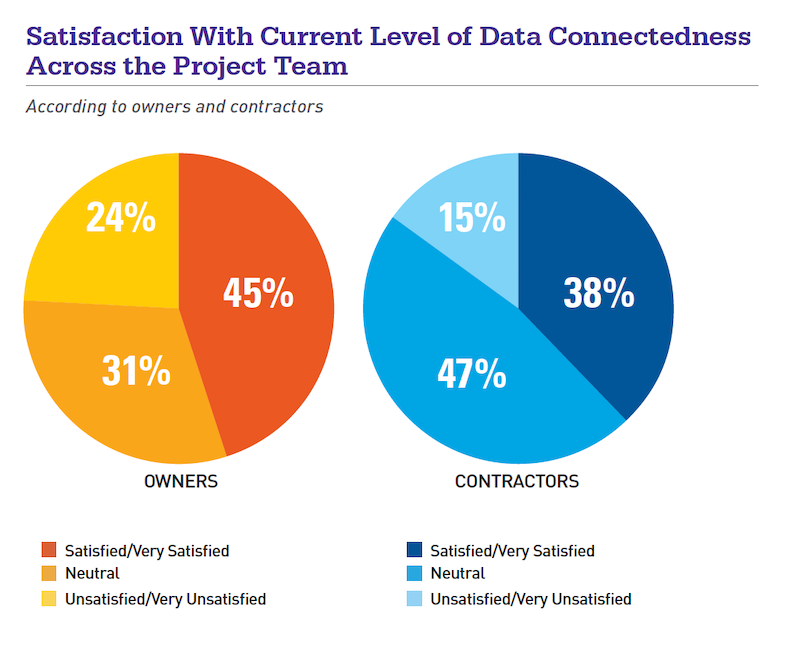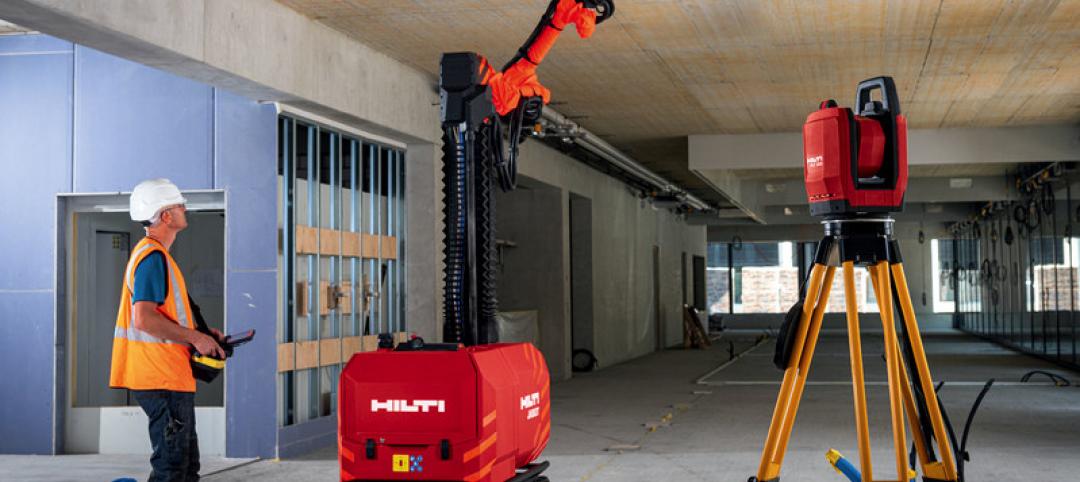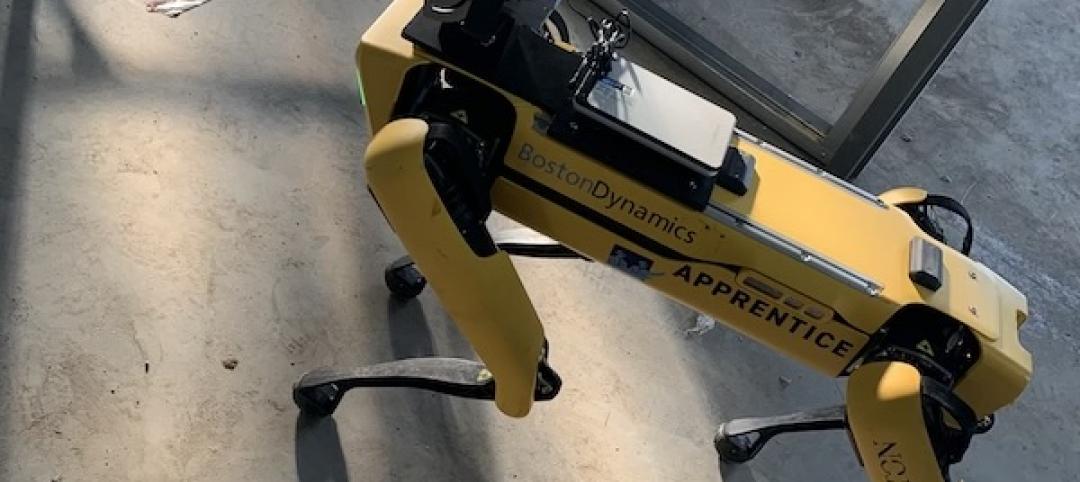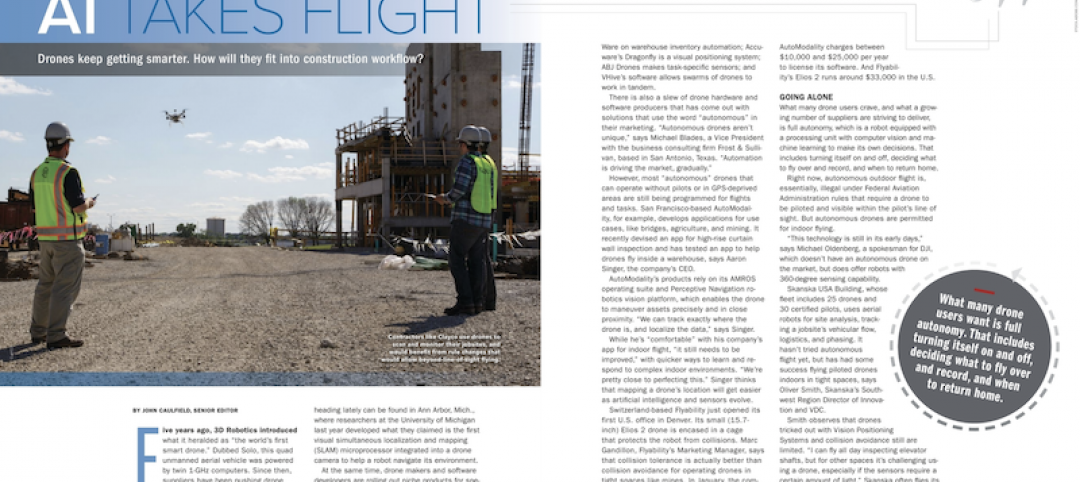A new survey of building owners and contractors highlights the challenges of managing construction projects when software applications lack automated data exchange processes.
The report, “Connecting Owners and Contractors: How Technology Drives Connected Construction,” was released by e-Builder, a Trimble Company, and Dodge Data & Analytics. It is based on responses to online surveys last Spring from 112 contracting companies and 98 building owners. Nearly three-quarters of the contractor respondents identify themselves as GCs. Sixty-nine percent of the owners operate within the public sector, and most focus on education, government, or healthcare projects.
Among these companies, 57% of owners and 52% of contractors say they use Project Management Information Systems (PMIS). However, these systems often are not compatible: only 16% of contractors say that an owner’s PMIS is the same as their own, and only 14% say they can integrate the two systems. But owners appear to have the upper hand here, as seven out of 10 owner-respondents with PMIS require contractors to use the owner’s system. More than half of these owners deploy their systems on more than half of their projects.
Consequently, about two-fifths of contractors say they end up using the owners’ systems and their own, leading to double data entry that, the survey found, has a negative impact on worker productivity, workflow, accuracy, decision making, and scheduling.

The survey finds that most owners insist that their PMIS prevail as the system used. That demand can present more work for contractors that also prefer to use their own systems.
More than one-third of contractors say they use the owner’s PMIS exclusively. The risk for contractors that use an owner’s PMIS, according to the survey, include increased costs, lack of proper documentation in the event of a claim, lack of project performance data and reports.
The disconnect, however, is that contractors see all these risks as being much bigger problems than owners do. Only two fifths of contractors are satisfied with the status quo, compared to nearly three fifths of owners. Contractors, though, also tend to be more neutral than owners about these systems’ incompatibilities, apparently accepting inefficiencies as part of doing business.
The irony is that there’s consensus among contractors and owners about, and a high level of satisfaction with, the overall benefits of using PMIS to handle such things as submittals and RFIs. Sixty-five percent of owners and 51% of contractors see high/very high value in a single platform that all parties use on projects for data management. “Both believe that creating a more seamless workflow for their processes would increase the value they receive,” the report states.

Contractors and owners agree that there's value in managing projects using a single, seamless system.
The report quotes Aaron Haas, Executive Vice President and construction manager with Howard Hughes, that within such a seamless scenario “there should be no miscommunication about cost, change orders, RFIs, submittals; it’s all one unified system.” Contractors in general believe that the key to accelerating this project process, and to getting paid quicker, is better data exchange.
But the industry has a ways to go to reach that plateau. The survey finds that 73% of contractors still use manual methods to measure project progress on more than half of their jobs, and 49% of pros subjectively estimate project progress on more than half of their jobs.
\More than a quarter of contractors don’t use a PMIS because they think it’s too expensive, and 23% think it’s too complicated. But 58% expressed a moderate to higher interest in using a system within the next three years.
Related Stories
AEC Tech | Oct 28, 2020
Meet Jaibot, Hilti's new construction robot
The semi-autonomous robot is designed to assist MEP contractors with ceiling-drilling applications.
Smart Buildings | Oct 26, 2020
World’s first smart building assessment and rating program released
The SPIRE Smart Building Program will help building owners and operators make better investment decisions, improve tenant satisfaction, and increase asset value.
AEC Tech | Oct 23, 2020
Risk mitigation: Seeing the forest and the tree
This case study highlights how new data analysis tools can be successfully leveraged to gain insights into some of the more abstract aspects of building evaluations.
Architects | Oct 14, 2020
The Weekly Show: AI for building facade inspections; designing a world-class architecture firm
The October 15 episode of BD+C's "The Weekly" is available for viewing on demand.
Smart Buildings | Oct 1, 2020
Smart buildings stand on good data
The coming disruption of owning and operating a building and how to stay ahead through BIM.
Digital Twin | Aug 27, 2020
The Weekly show: Digital twin technology and social equity in the AEC market
The August 27 episode of BD+C's "The Weekly" is available for viewing on demand.
AEC Tech | Apr 13, 2020
A robotic dog becomes part of Swinerton’s construction technology arsenal
Boston Dynamics, the robot’s creator, has about 100 machines in the field currently.
AEC Tech | Mar 30, 2020
Will 3D printing be an answer for building more affordable homes?
A project in southern California will put onsite fabrication to the test against other construction modes.
AEC Tech | Mar 23, 2020
Working from home? Don't miss out on the latest issue of Building Design+Construction
BD+C's March issue features the largest and most important technological innovations across the AEC industry.
AEC Tech | Mar 17, 2020
A tree grows in Stanford: CIFE, VDC, and where it all began
As our industry adopts VDC as standard practice, it is important to remember where these ideas began and continue to emanate from today.
















